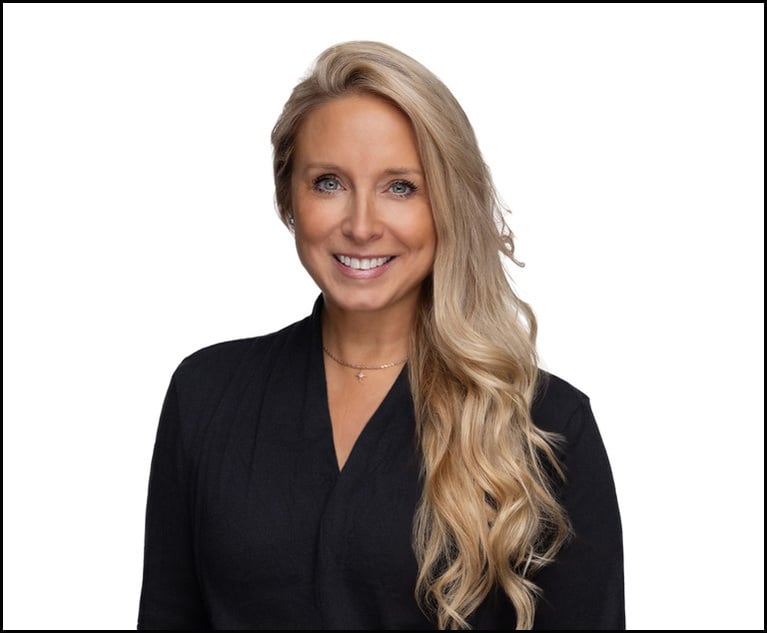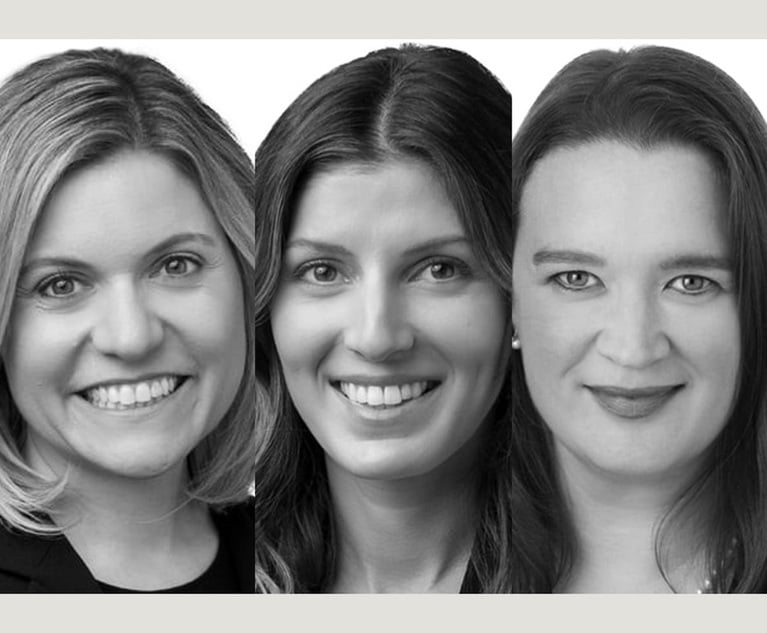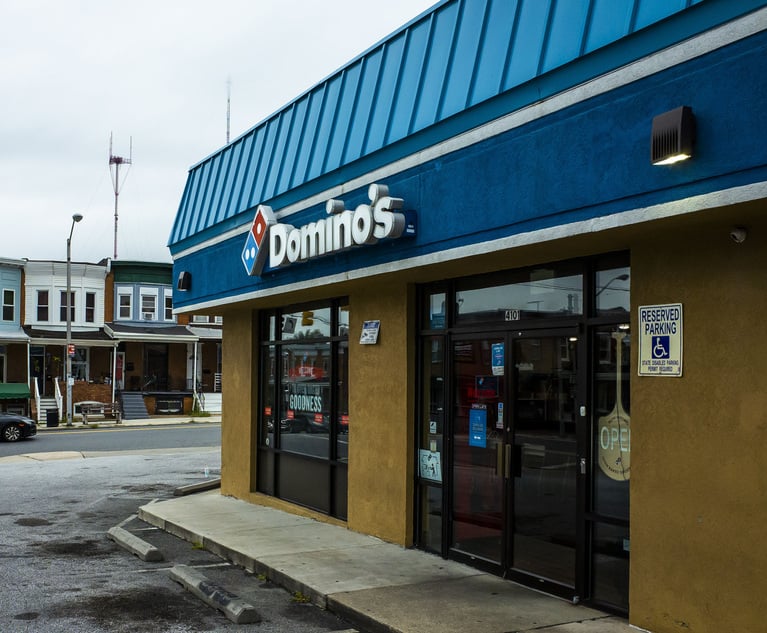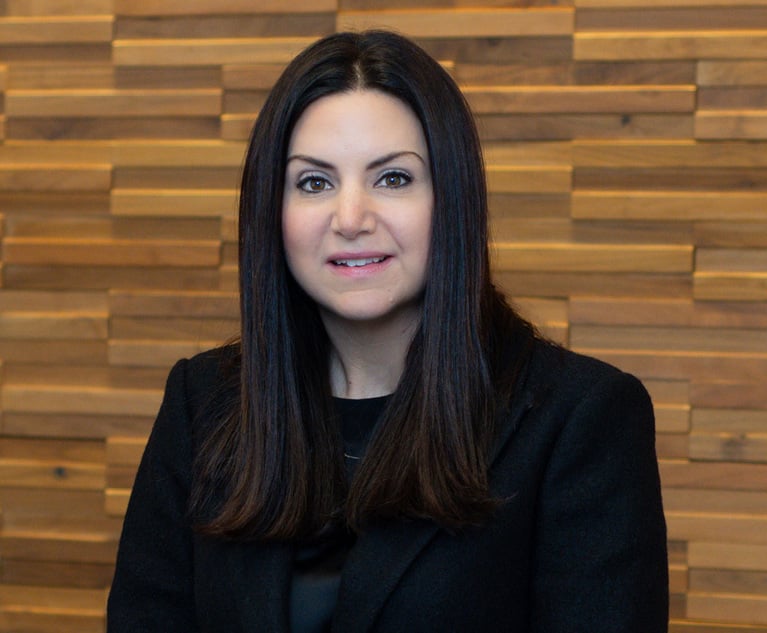Middle Market Proves Top Prospect for Many Am Law Firms
Rather than trying to crack into the overly competitive Fortune 50 territory, an increasing number of Am Law 200 firms and below are finding there is no shame being in the middle.
December 04, 2017 at 06:00 PM
10 minute read
 Russell Gertmenian of Vorys, Sater, Seymour & Pease.
Russell Gertmenian of Vorys, Sater, Seymour & Pease.
Editor's note: This is the first in a series looking at how law firms fit into the middle market.
Midsized businesses may not seem like the most exciting clients for law firms, especially as the largest and richest firms pull away from the pack with their ever-growing profits. But for the firms who have embraced it, working with midmarket clients is anything but mediocre.
A number of law firms have doubled down on their commitment to the middle market, even Am Law 100 and 200 firms such as Fox Rothschild; Vorys, Sater Seymour and Pease; Cozen O'Connor and McCarter & English. In this segment—of which definitions vary, but which generally includes businesses with $50 million to $500 million in annual revenue—these firms see a large population of clients and potential clients who want deep relationships with their lawyers more than a big brand-name firm.
“Law firms outside the top 20 … they are getting squeezed by the Am Law 20 on the most lucrative work,” says Russell Gertmenian, managing partner of Columbus, Ohio-based Vorys. “As a result, I think folks that fall outside of that category are looking at 'How do we grow?' because we can't penetrate that market like we used to.”
But the middle has always encompassed a broad swath of companies, who generate plenty of deals and other matters even if the work doesn't carry as large a price tag. “There's more mid-cap and small-cap companies than there are big-cap companies … obviously they're looking for rates that are lower than the megafirms,” says Michael Kelly, chairman of Newark, New Jersey-based McCarter & English. “We've targeted that market, and we've had great success doing that, because there's great demand.”
And the amount of work available in that segment is constantly growing.
“Midmarket companies are normally always in growth mode, so as they're growing there are opportunities to grow with them and expand the amount and type of work that you're doing for them,” says Cozen O'Connor CEO Michael Heller. “They have the same sophisticated work that larger Fortune 1000 companies may have,” Heller says. “The number of zeroes may not be the same, but the sophistication of the work is and the complexity of the matters are.”
Some national firms are trying to make inroads with middle-market clients—the businesses who are past the startup stage, and not yet among the billion-dollar corporations—as shown by their strategies for geographic expansion. For instance, a range of firms have opened up shop in Minneapolis in the past five years, including Jones Day, Fox Rothschild, Cozen O'Conner, Dykema Gossett and Ballard Spahr.
Such a strategy can be more attractive to Am Law 100 firms than fighting over a limited supply of Fortune 100 work, Gertmenian says. “They're looking for ways to grow revenue and they have to look downward,” Vorys' Gertmenian says. “They come into markets like ours [and say,] 'Yeah, we're more expensive, but we have more experience.'”
But that argument doesn't get them very far, Gertmenian contends, when the competition includes firms that have decades of experience working with those clients. “The struggle with that is the middle-market companies generally have very strong relationships with their lawyers,” he says. “It's hard to break into that, and it's hard to undo those relationships.”
A Wide Target
Many of the law firms who cater to midmarket clients have simply always done so. It was the client base available when they started, and with a broad base of clients falling into that group, the firms grew.
For Vorys Sater, the midmarket focus was a product of the environment in which the firm was born, Gertmenian says. Until the mid-1970s, the firm only had one office in Columbus, Ohio. “As a result of that, the type of clients that firms in cities like ours had over the last 50 to 75 years are really those middle-market companies,” Gertmenian says. “We didn't have a whole slew of Fortune 500s that were headquartered in Columbus” when the firm was founded.
For midsize law firms, marketing to those clients just made sense, says Ronald Shechtman, managing partner of New York-based Pryor Cashman. The majority of his firm's clients are outside the Fortune 500, he says.
“It's less a target than a natural outgrowth of who our partners are, and who their contacts are, and who they do business with,” Shechtman says. “The nature of our practice as it's grown and developed has been relationships fostered between our partners and midmarket companies that often do not operate within the bureaucracy of a general counsel's office.”
Deep-seated relationships are a common theme among firms that work with midmarket clients. That includes firms that have grown from a few hundred lawyers to more than 700, like Philadelphia-based Fox Rothschild and Cozen O'Connor. Mark Morris, managing partner of Fox Rothschild, says that the middle market can include companies “of a significant size,” but even those businesses are more interested in developing one or just a few relationships with law firms.
“You sometimes have an opportunity to capture a bigger segment, perhaps all of the work or more of the work, from a middle-market client than you would from perhaps a Fortune 500 company,” Morris says.
Randy Adler, who joined Fox Rothschild in March, says he was interested in the firm because it is able to serve companies in all stages and in a wide variety of practice areas. Adler co-chairs the firm's emerging companies and venture capital practice group, and works with companies ranging from the startup stage to mid-cap businesses.
“There's a very compelling reason to use a firm of our size in the middle market,” he says. “You're getting the incredible legal quality … a middle-market price point, and you're getting one-stop shopping.”
As companies expand, Adler says, they outgrow their law firms. But they still don't want to pay megafirm prices. Because Fox Rothschild has lawyers in some lower-rate cities, Adler says that even with a head count of more than 700 lawyers, it's able to fit the midmarket client's budget. Heller says Cozen O'Connor has also been able to grow with its clients. Like Fox Rothschild, it has been in a growth spurt. Cozen O'Connor also represents Fortune 1000 companies, Heller notes.
“We're constantly expanding both the nature of the practices we have, as well as the geography,” he says. For instance, the firm has recently focused on building up its labor and employment practice in multiple locations. Practices like that are necessary for a firm marketing to mid-cap companies, Heller says.
Similarly, Vorys Sater has seen some of its clientele enter a different league, as Columbus-based companies like Wendy's and Cardinal Health grew, Gertmenian says. Those remain the exception, however. “Even today as we do larger work for people … the bread and butter of our firm and firms like ours still is that middle-market company,” he says.
Still, he notes, the firm has fewer opportunities than it might like to work with companies just below midmarket in size. By Columbus standards, he says, Vorys is expensive. “Firms like ours need to double down on their efforts to provide client service,” Gertmenian says, and they need to “build relationships on a personal level with the clients that are here.”
Relationships and Rates
As a generalization, Gertmenian says, midmarket companies and midmarket law firms are able to hit a sweet spot on rates. “The middle market companies I think put more stock in the relationship they have with one or more lawyers,” he says. “There's a value to that that the larger companies don't always appreciate, or it's not as important to them.”
Large public companies have more resources dedicated to reducing legal spending, Fox Rothschild's Adler says. And at the biggest companies, Gertmenian says, you're dealing with members of the general counsel's office, who may come and go. But at a midmarket business, often the point of contact is someone directly involved in leading the business, like the CEO or COO.
“We really develop relationships with the management and the ownership of the client on a very different level than when you do work for [a huge company],” Gertmenian says. “If you're successful, there's a trust that develops between the law firm and the client.”
Cozen O'Connor's Heller agrees, and says that level of trust makes midmarket clients more willing to invest in good legal counsel. “It varies by company, but I do think that middle market companies are more willing to view their outside counsel as partners, and because they don't have that in-house counsel or extensive in-house counsel, they probably see a greater value,” Heller says.
That kind of relationship doesn't mean price-gouging clients. It often means landing in the middle. For Cozen O'Connor, keeping overhead costs low has been imperative, so the firm can offer reasonable rates to midmarket clients, Heller says. “We have never wanted to be the highest rate law firm and we've never wanted to be the lowest rate law firm,” he says. “We want to provide our clients with the most value.”
It may be that the largest corporations have the most buying power, says Fox Rothschild's Morris. But midmarket companies know what they're looking for in terms of rates. “They also have options. They expect to be treated as fairly as some of the larger companies,” he says.
Even a national law firm with a midmarket focus can provide more affordable options, compared to the high-rate, go-to firms for Fortune 500 businesses. Adler says Fox's hourly rate for a partner is comparable to the associate rates at the largest and richest Am Law 100 firms.
The perception of value often attracts midmarket clients to firms with a more affordable rate structure than the very top of the Am Law 100 offers. Sometimes that means a national Am Law 100 firm in the second 50, like Cozen O'Connor or Fox Rothschild. But it can also mean a midsize firm like Pryor Cashman or a regional Am Law 200 firm like McCarter & English. “The big expensive firm gives them cover, but I can tell you with no uncertainty that we will do a better job with less cost,” McCarter & English's Kelly says.
That's why the clients may seem more willing to compromise with their firm, Shechtman says. They're starting from a more reasonable point.
“Midmarket clients are highly sensitive to fee structure. We have to be nimble in dealing with fee arrangements,” Shechtman says. “It's more of a function of the attorney's sensitivity to the client's needs and the client's budget, and working to make it fit.”
If that's done properly, and the relationship is valuable, the client won't fight back on rates. “When you approach it in a more reasonable fashion … people tend to respect that,” Adler says.
This content has been archived. It is available through our partners, LexisNexis® and Bloomberg Law.
To view this content, please continue to their sites.
Not a Lexis Subscriber?
Subscribe Now
Not a Bloomberg Law Subscriber?
Subscribe Now
NOT FOR REPRINT
© 2025 ALM Global, LLC, All Rights Reserved. Request academic re-use from www.copyright.com. All other uses, submit a request to [email protected]. For more information visit Asset & Logo Licensing.
You Might Like
View All


Pa. Superior Court Rules Pizza Chain Liable for Franchisee Driver's Crash
4 minute read
Trending Stories
- 1Thursday Newspaper
- 2Public Notices/Calendars
- 3Judicial Ethics Opinion 24-117
- 4Rejuvenation of a Sharp Employer Non-Compete Tool: Delaware Supreme Court Reinvigorates the Employee Choice Doctrine
- 5Mastering Litigation in New York’s Commercial Division Part V, Leave It to the Experts: Expert Discovery in the New York Commercial Division
Who Got The Work
J. Brugh Lower of Gibbons has entered an appearance for industrial equipment supplier Devco Corporation in a pending trademark infringement lawsuit. The suit, accusing the defendant of selling knock-off Graco products, was filed Dec. 18 in New Jersey District Court by Rivkin Radler on behalf of Graco Inc. and Graco Minnesota. The case, assigned to U.S. District Judge Zahid N. Quraishi, is 3:24-cv-11294, Graco Inc. et al v. Devco Corporation.
Who Got The Work
Rebecca Maller-Stein and Kent A. Yalowitz of Arnold & Porter Kaye Scholer have entered their appearances for Hanaco Venture Capital and its executives, Lior Prosor and David Frankel, in a pending securities lawsuit. The action, filed on Dec. 24 in New York Southern District Court by Zell, Aron & Co. on behalf of Goldeneye Advisors, accuses the defendants of negligently and fraudulently managing the plaintiff's $1 million investment. The case, assigned to U.S. District Judge Vernon S. Broderick, is 1:24-cv-09918, Goldeneye Advisors, LLC v. Hanaco Venture Capital, Ltd. et al.
Who Got The Work
Attorneys from A&O Shearman has stepped in as defense counsel for Toronto-Dominion Bank and other defendants in a pending securities class action. The suit, filed Dec. 11 in New York Southern District Court by Bleichmar Fonti & Auld, accuses the defendants of concealing the bank's 'pervasive' deficiencies in regards to its compliance with the Bank Secrecy Act and the quality of its anti-money laundering controls. The case, assigned to U.S. District Judge Arun Subramanian, is 1:24-cv-09445, Gonzalez v. The Toronto-Dominion Bank et al.
Who Got The Work
Crown Castle International, a Pennsylvania company providing shared communications infrastructure, has turned to Luke D. Wolf of Gordon Rees Scully Mansukhani to fend off a pending breach-of-contract lawsuit. The court action, filed Nov. 25 in Michigan Eastern District Court by Hooper Hathaway PC on behalf of The Town Residences LLC, accuses Crown Castle of failing to transfer approximately $30,000 in utility payments from T-Mobile in breach of a roof-top lease and assignment agreement. The case, assigned to U.S. District Judge Susan K. Declercq, is 2:24-cv-13131, The Town Residences LLC v. T-Mobile US, Inc. et al.
Who Got The Work
Wilfred P. Coronato and Daniel M. Schwartz of McCarter & English have stepped in as defense counsel to Electrolux Home Products Inc. in a pending product liability lawsuit. The court action, filed Nov. 26 in New York Eastern District Court by Poulos Lopiccolo PC and Nagel Rice LLP on behalf of David Stern, alleges that the defendant's refrigerators’ drawers and shelving repeatedly break and fall apart within months after purchase. The case, assigned to U.S. District Judge Joan M. Azrack, is 2:24-cv-08204, Stern v. Electrolux Home Products, Inc.
Featured Firms
Law Offices of Gary Martin Hays & Associates, P.C.
(470) 294-1674
Law Offices of Mark E. Salomone
(857) 444-6468
Smith & Hassler
(713) 739-1250





